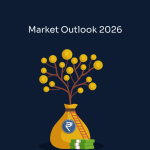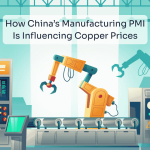As India accelerates its industrial and infrastructure development, the demand for raw materials is reaching new heights. This shift places mining and mineral companies at the heart of the country’s growth narrative. Stocks that once flew under the radar are now emerging as compelling long-term opportunities. These midcap players come with niche strengths that offer a thoughtful balance of risk and reward. For investors seeking value beneath the surface, this space warrants deeper attention.
Gujarat Mineral Development Corporation Limited (GMDC)
Gujarat Mineral Development Corporation has steadily transitioned into a robust and cash-rich enterprise. With over ₹1,200 crore in reserves and no debt on its books, the company is well-positioned to expand its mining operations. Its presence spans lignite, bauxite, and manganese, and it is now actively venturing into rare earth minerals. Backed by the Gujarat government, GMDC is aligning itself with India’s push for mineral self-reliance. Improving returns and consistent operating margins make this one to watch.
Hindustan Copper Limited (HCL)
Hindustan Copper remains the only vertically integrated copper producer in the country. With the global copper market benefitting from trends in electrification and renewable energy, the company has laid out ambitious expansion targets. It aims to significantly raise its mining output by the end of the decade. Supported by government initiatives and a resurgence in copper pricing, Hindustan Copper is quietly turning into a strategic resource player.
MOIL stands as India’s largest producer of manganese ore, serving both steel and battery manufacturing sectors. It maintains a clean balance sheet and has a track record of steady dividend payouts. As demand for battery-grade manganese strengthens, MOIL’s capacity expansion plans and pricing strength position it for consistent performance. Its PSU status and strategic mineral reserves offer both stability and long-term upside.
Sandur Manganese & Iron Ores Limited
Sandur Manganese and Iron Ores Limited brings a unique combination of scale and efficiency to the table. Operating across iron ore, manganese, and ferroalloys, the company’s integrated business model allows for greater control over margins and output. It has secured approvals to increase its mining limits and is also investing in sustainable mining practices. With a measured approach to growth and capital allocation, Sandur presents a rare blend of discipline and scale in the midcap mining space.
Orissa Minerals Development Company Limited (OMDC)
Orissa Minerals Development Company may be lesser known but its mines hold rich deposits of iron and manganese ore in Odisha. After a prolonged pause in operations, the company is now moving toward revival, with mining leases being reactivated. As it readies for production resumption, OMDC represents a latent opportunity, particularly in a commodity environment where resource ownership is becoming more valuable by the day.
Sundaram Clayton Limited (SCL)
While better known for its auto components, SCL also holds exposure to mineral-related manufacturing, particularly through its die-casting operations. The shift toward lightweight and EV-friendly materials makes its specialized aluminium alloy production increasingly relevant. With an efficient cost structure and long-standing relationships with OEMs, SCL represents the manufacturing end of the mineral value chain, benefiting from rising non-ferrous metal demand.
Maithan is among India's leading producers of ferroalloys, a critical input for the steel industry. It enjoys healthy EBITDA margins and a strong export presence, particularly in Southeast Asia. The management has consistently focused on operational efficiency and backward integration, sourcing key raw materials from captive or nearby mines. With steel demand expected to remain strong and Maithan’s reputation for quality, the company is well-equipped to maintain growth.
Indian Metals & Ferro Alloys Limited (IMFA)
Indian Metals & Ferro Alloys is the country’s largest producer of ferro chrome. IMFA benefits from its captive chrome ore mines and fully integrated operations across mining, smelting and captive power. Despite the cyclicality of ferro chrome prices, IMFA has managed to stay profitable and even reduce debt steadily over time. Its presence in export markets like China and Japan adds to its resilience. With stainless steel demand projected to increase globally, IMFA could see a multi-year upcycle.
Conclusion
India's mining and mineral midcaps are entering a new growth phase driven by both domestic infrastructure projects and global shifts in resource demand. These companies, with their strategic reserves, improving fundamentals, and focused expansion plans, may provide attractive investment opportunities for FY25 and beyond. As always, investors should consider regulatory and commodity price risks while evaluating these stocks, but the broader theme remains structurally positive.
Disclaimer:
The blog is for information purposes only and anything mentioned herein shouldn’t be construed as a fundamental reason to buy/hold/sell any stock. Furthermore, the information provided in the blog and observations made therefrom shouldn’t be treated as the extension of recommendations made on the other properties of Ventura Securities. If you follow any research recommendations made by our fundamental or technical experts, you should also read associated risk factors and disclaimers.
We strongly suggest you consult your financial advisor before taking any decision pertaining to your finances. Asset allocation becomes extremely relevant.
We, Ventura Securities Ltd, (SEBI Registration Number INH000001634) its Analysts & Associates with regard to blog article hereby solemnly declare & disclose that:
We do not have any financial interest of any nature in the company. We do not individually or collectively hold 1% or more of the securities of the company. We do not have any other material conflict of interest in the company. We do not act as a market maker in securities of the company. We do not have any directorships or other material relationships with the company.
We do not have any personal interests in the securities of the company. We do not have any past significant relationships with the company such as Investment Banking or other advisory assignments or intermediary relationships. We are not responsible for the risk associated with the investment/disinvestment decision made on the basis of this blog article.

Market outlook 2026: Essential Do’s and Don’ts for Successful Investing
4 min Read Jan 2, 2026
China Manufacturing PMI at 50.1 Signals Stabilisation, Copper Prices Rally
4 min Read Dec 31, 2025
F&O Lot Size Changes in India: What Traders Need to Know (Effective Jan 2026)
4 min Read Dec 31, 2025
Revisiting the Gold-Silver Ratio Amid Silver's Outperformance
4 min Read Dec 22, 2025
Midcaps: Sweet Spot or Danger Zone? | What HSBC MF’s Cheenu Gupta Thinks | Ventura Spotlight
4 min Read Dec 17, 2025